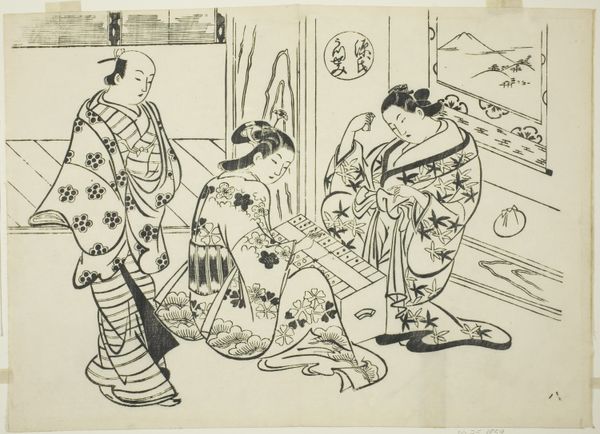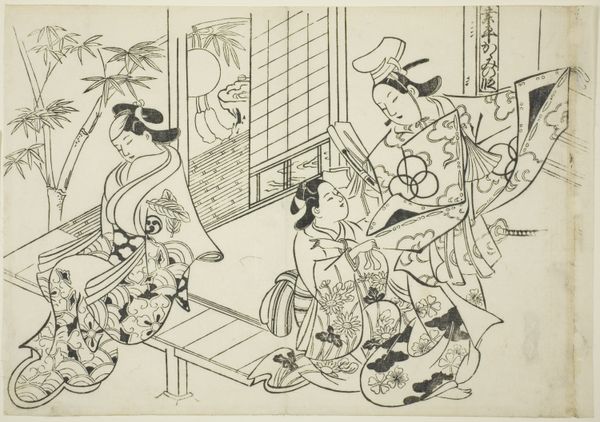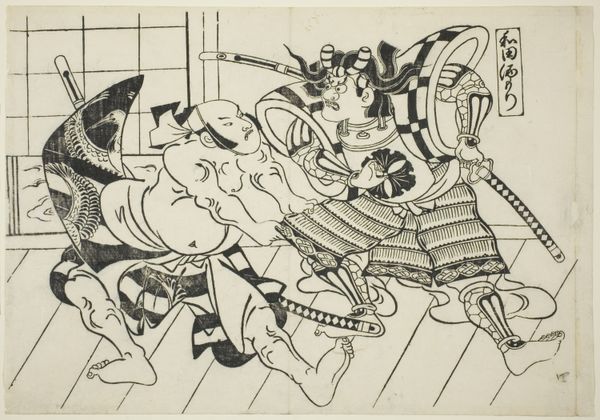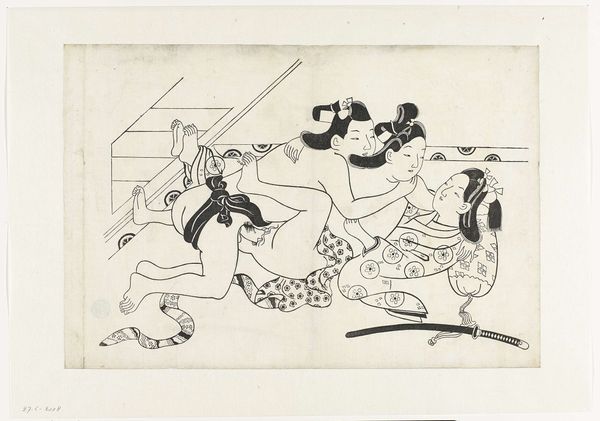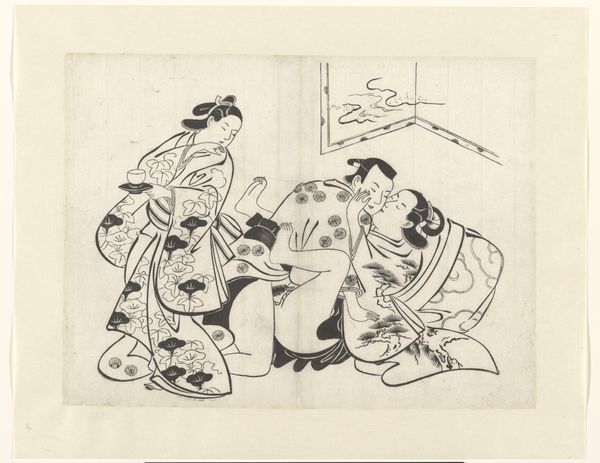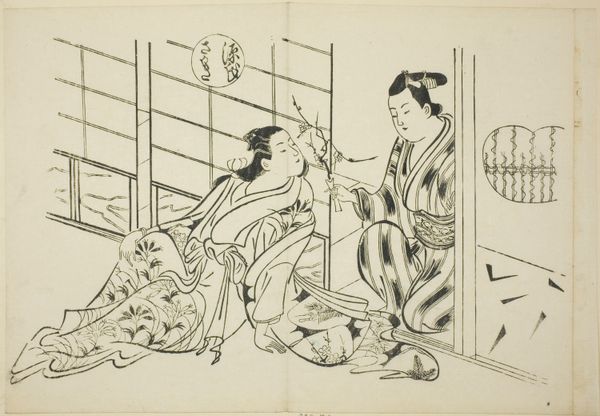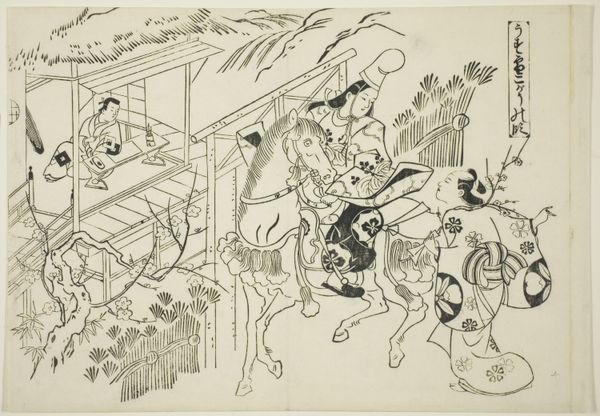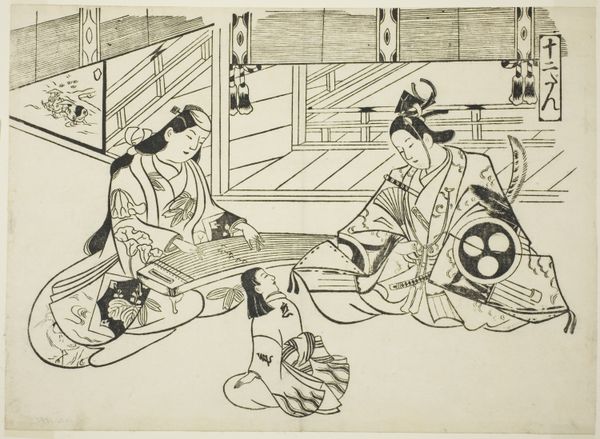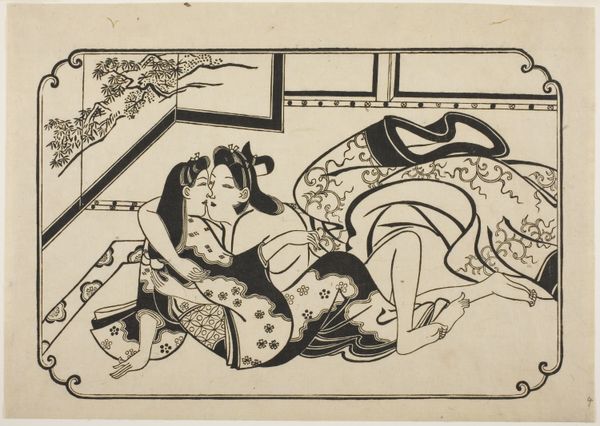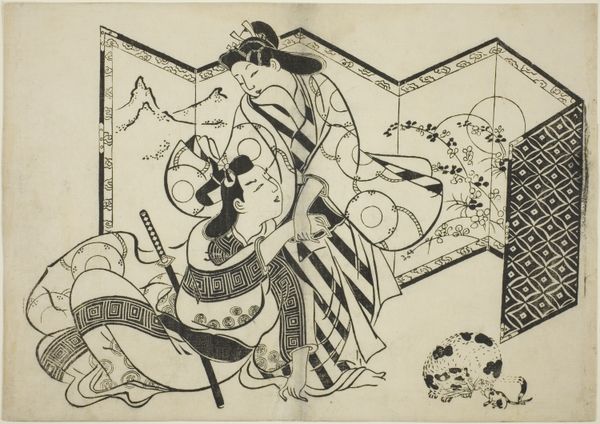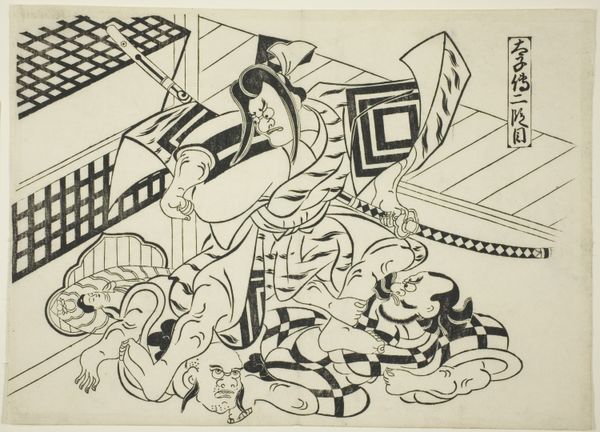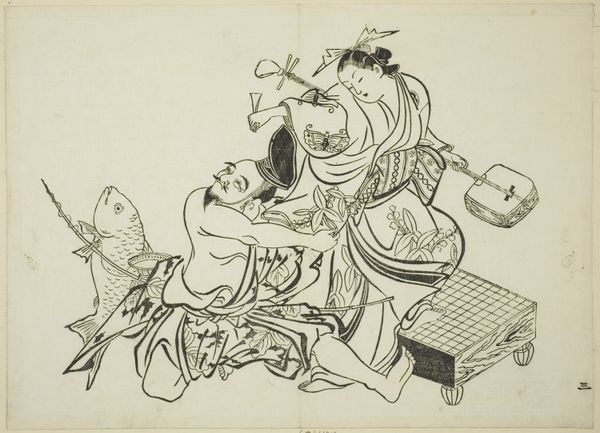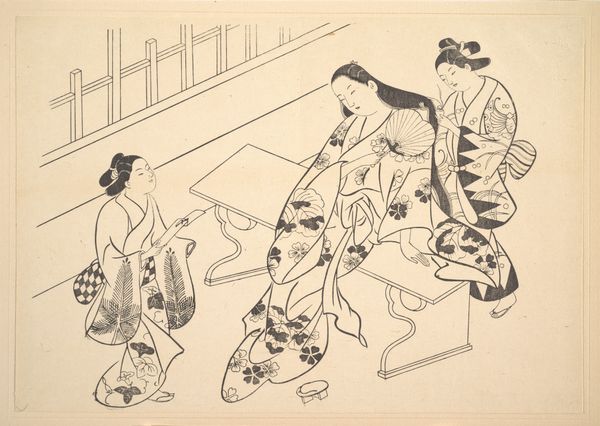
A Courtesan with Her Client, the first sheet of an untitled erotic picture album c. 1673 - 1681
0:00
0:00
print, paper, ink
# print
#
asian-art
#
ukiyo-e
#
japan
#
figuration
#
paper
#
ink
#
genre-painting
#
erotic-art
Dimensions: 27.2 × 38.3 cm
Copyright: Public Domain
Curator: This image, held here at the Art Institute of Chicago, comes from Hishikawa Moronobu, active in the latter half of the 17th century. Titled "A Courtesan with Her Client, the first sheet of an untitled erotic picture album," it gives us a glimpse into ukiyo-e printmaking during the Edo period. Moronobu utilized ink on paper. Editor: Well, right away I'm struck by how much the patterning seems to define the space— the grid of the doorframe against the organic waves in the screen and then of course the robes themselves. It’s decorative, yet it creates this feeling of intimacy. Curator: It does speak to the compartmentalization of pleasure within carefully prescribed social structures. Moronobu, of course, emerged during a transformative era. The rise of the merchant class created new audiences for art, moving it away from the aristocracy, though those strict social divisions remain visible in the imagery itself. Editor: Absolutely. And the courtesan is never presented outside the bounds of an arranged setting. Her presentation—downcast eyes, formal pose even when intimate— speak to the way these women negotiated power within that structure through gesture and controlled eroticism, which is a potent symbol of controlled sensuality. The symbolism there is intense, it mirrors Japanese screen paintings that represented sexual liberation as a form of rebellion Curator: Interesting interpretation. Though the rise of these prints contributed to solidifying certain societal hierarchies in these images. In this case the figures occupy a private sphere, meant only for the client’s pleasure, and that shapes the political realities as well. We are seeing through a keyhole. These are men’s images, for male consumption. Editor: Perhaps, but the client, here is rendered somewhat vulnerable; nearly upside-down and in a rather less controlled pose that his companion. Maybe she possesses control of her own sexuality and presentation as a sign of rebellion within this world? Curator: Well, whatever way one looks at the figures, their clothing patterns, this intimate exchange, became commodities in a sense. Ukiyo-e democratized art, but also cemented certain social views that are well for discussing even now. Editor: Exactly. Visual codes always operate on multiple levels. It really underscores how much these images communicate about desire, class, and power in that era. Curator: Precisely, a lot to think about beyond just the initial erotic appeal, wouldn't you agree? Editor: Yes, this makes one see the images in entirely different lights, certainly something worth reflecting on.
Comments
No comments
Be the first to comment and join the conversation on the ultimate creative platform.
